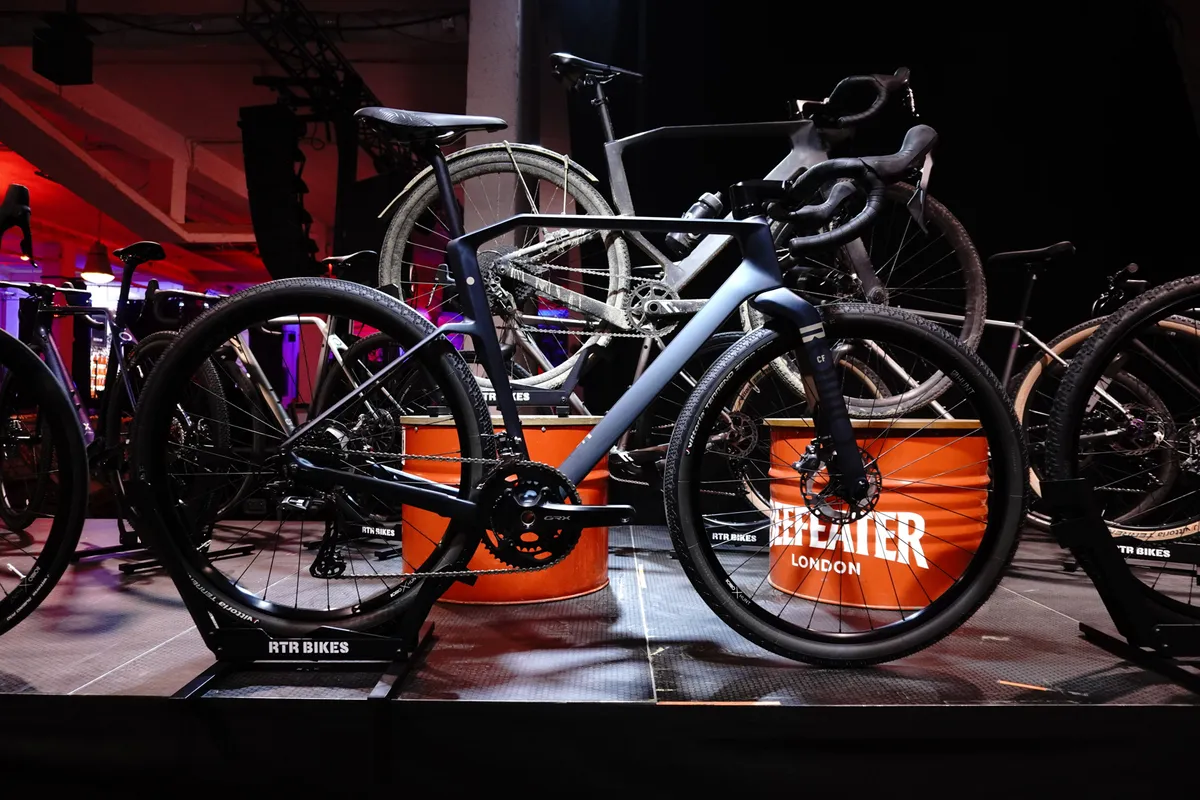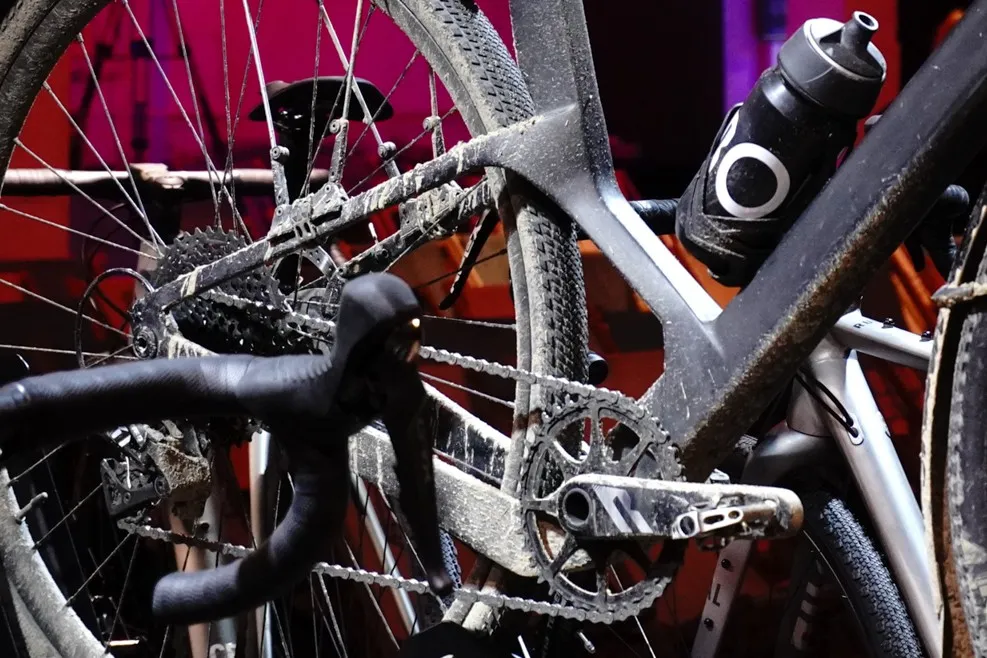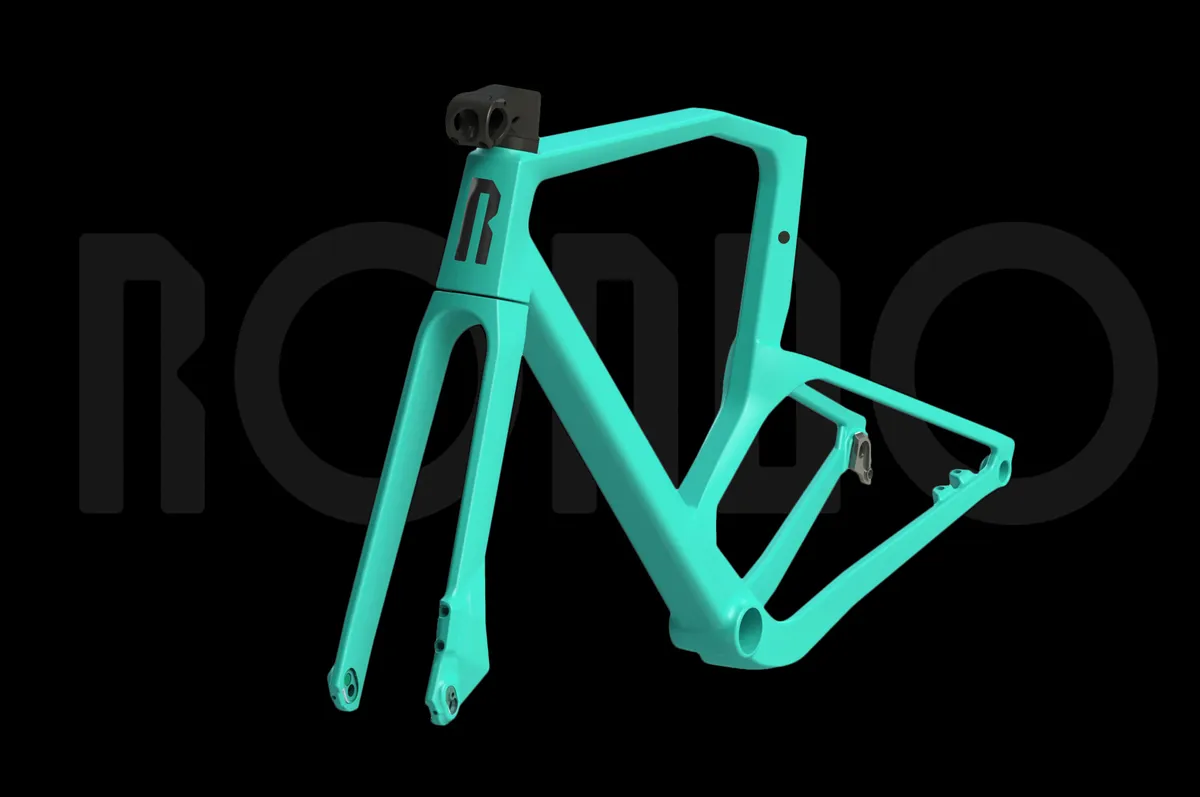Rondo’s original gravel bike, the Ruut, is getting a complete redesign, with the new model featuring an interrupted seat tube. By ditching the seat tube as we know it, Rondo says it's adding parts-free, leaf-spring-like suspension to the frame.
Haven't we seen something similar recently? Well, back on 14 February, we reported on Specialized’s latest patent application, showing an interrupted seat tube design with an angled strut, mooted to be the next Roubaix endurance platform.
Now, however, the Rondo Ruut CF V2 has broken cover to lead this particular tech race.
Rondo says the Ruut’s polygon rear end is designed to act like a leaf spring to improve comfort, following the trend for micro-suspension in gravel bikes.
Here’s what we know so far about what’s likely to be one of the wilder launches of 2023.
A fresh approach from Rondo

Polish brand Rondo has a reputation for being a disruptor in the market – and that tradition looks set to continue here.
Rondo’s bikes include the original Ruut released back in 2017, which brought geometry-adjusting, flip-chip dropouts – tech now used by Giant, Fifty-One and Cervélo among others – to a gravel bike. Then there was our Bike of the Year 2019 winner, the HVRT, which combined all-road, gravel and aero road to impressive effect.
In the brand’s latest move, the long-standing Ruut gravel bike is set to get a complete redesign coming later this year, with Rondo’s technical product manager, Marcin Skiba, confirming to BikeRadar that the Ruut V2 should be in stores in November 2023.

The new Ruut, Skiba tells us, is designed to occupy the middle ground in Rondo’s three-bike gravel line-up. And he’s quick to point out that the interrupted seat tube design was conceived back in 2020, with R&D work on the concept starting then, too.
“We have the Ratt, which is our all-road-biased gravel bike,” says Skiba. “It's designed to be fast on the road and capable off. At the other end of the scale is the Mylc, which is for the more extreme side of gravel, be that more gravity-inspired riding or more technical terrain over longer distances.”
We have the Rondo Ratt, launched in May 2022, in our 2023 Bike of the Year test – coming to BikeRadar in May – and a Mylc on the way for testing, having seen it at last year’s Eurobike show.
But what about that seat tube?

While the new Ruut is yet to be launched officially, we managed to extract a few more details out of Skiba, including about the polygon rear end that interrupts the seat tube.
“The back end is all about comfort,” he says. “It's not true suspension but acts like a leaf spring.”
The idea, Skiba adds, is that it's constantly active, because you have none of the stiction from more complex gravel suspension designs, with their pivots, bushes and linkages. The Ruut's new design, he says, allows for flex vertically without compromising bottom bracket lateral stiffness, which in turn could affect the handling.
In short, it's Rondo’s answer to bikes such as the Specialized Diverge STR, Cannondale’s Topstone with its Kingpin pivot, BMC’s URS LT, with micro-suspension front and rear, and, of course, Trek’s IsoSpeed-equipped drop-bar bikes.
What else do we know?

In terms of weight, Skiba says the latest pre-production frames are in line with the original Ruut (under a kilo), so expect premium complete bikes around the 8kg mark, as with the current range.
As for the radically angular looks across the frame, Skiba says: “We’ve got the angular look on the Mylc and the Ratt, and the Ruut follows in a common design across all models.”
The new fork retains Rondo’s signature flip-chip dropout, so, like the original Ruut and HVRT, we’d expect the option to run the bike with longer or shorter fork trail, to adapt the geometry to different terrain.
Cable routing also appears to be fully internal, using Rondo’s ICR system, and the fork looks to be drilled to be able to run a dynamo hub.
As for aerodynamics – an area getting talked about more in gravel, thanks to race machines such as BMC’s Kaius – Skiba says: “We don’t think aero is a big need for our gravel riders. We’d rather have comfort and handling as our priorities.”
1x-only

With its interrupted seat tube design, the new Ruut will be compatible with 1x drivetrains only, though there will be the option to run either mechanical or electronic groupsets.
As for frame materials, the current Ruut comes in aluminum, steel and titanium frames, all sharing similar designs to the carbon bike.
For V2, all of the metal bikes will be updated too, but not with the interrupted seat tube design.
Otherwise, the frame will run 12mm thru-axles, and has provision for three bottles and top tube bag mounts. The built-up rideable prototype appears to have a UDH-compatible rear derailleur fitting, too.
When will the Rondo Ruut V2 be available?

Skiba told us Rondo has had rideable prototypes running for a few months now and, with the tweaks and updates it has implemented from this final stage of testing, it is now moving into production on the finished design.
No complete bike details are available yet, but Rondo told us to expect both mechanical and electronic drivetrain options.
We’ll bring you full details when we have them – and let you know how it rides once the Ruut V2 is released.
In the meantime, look out for our review of the latest Rondo Ratt CF2 in our upcoming Bike of the Year mega-test.

